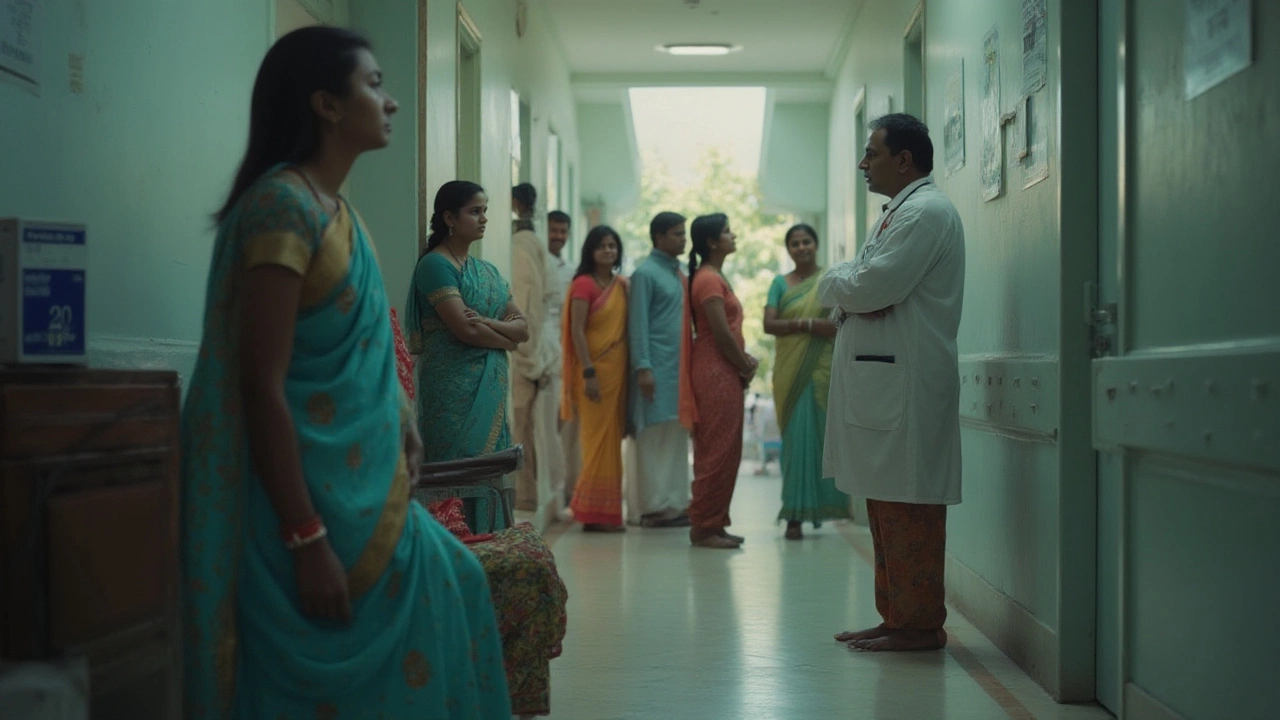
Imagine waking up one morning and learning you’ve got only months—sometimes just weeks—to live. That's not just a line from a drama. For thousands, it's brutally real, thanks to the fastest killing cancers out there. Some cancer types move quietly, giving just vague symptoms, but by the time you notice, it's almost game over. It doesn’t just happen to people who ignore their health. Even those on top of screening can get blindsided.
The Nature of Fast-Killing Cancers
Not all cancers play by the same rules. Some creep along for years, but others rampage through the body at a frightening speed. What makes a cancer deadly fast isn’t just where it starts, but how sneaky it acts and how much time it gives you before showing symptoms. Pancreatic cancer, for example, is usually quiet until late stages. By the time patients even feel sick, the tumor might have spread everywhere.
The main factors that make a cancer a "fast killer" include:
- Location: Cancers in certain organs, like the pancreas or brain, cause problems before you know they’re there.
- Aggressiveness: Some cells divide rapidly, forming new tumors in weeks.
- Lack of early symptoms: Tumors can get big or spread without hints or warning.
- Poor response to treatment: Some cancers ignore chemo, radiation, or even surgery.
Here’s the thing: even if you have a family history, or you’re super healthy, the risk is there. Learning what these cancers are and their warning signs can give you, or someone you love, a leg up.
Which Cancers Kill the Fastest?
It’s not a competition anyone wants to win, but certain cancers are infamous for hitting fast and hard. At the top of the list:
- Pancreatic cancer: Less than 10% survive five years after diagnosis. The pancreas is tucked away, so tumors can get huge before they’re noticed. Jaundice (yellowing skin), new diabetes, belly pain—these are sometimes the first signs. By then, most people have advanced disease, which spreads like wildfire.
- Liver cancer: Can go from a single nodule to a body-wide disaster in months, especially in people with hepatitis or cirrhosis. Symptoms like fatigue and weight loss often show up late.
- Lung cancer, specifically small cell lung cancer (SCLC): SCLC doubles in size every 25–30 days on average. It can go from a cough to incurable metastasis in under a year.
- Brain cancers, like glioblastoma multiforme: Median survival after diagnosis is often under 15 months, and many patients lose basic functions very quickly.
- Esophageal cancer: By the time swallowing gets tough, most people are already late-stage. Five-year survival rates rarely top 20%.
Here’s a table comparing median survival rates (how long 50% of patients survive):
| Cancer Type | Median Survival Rate | Common Early Symptoms |
|---|---|---|
| Pancreatic | 4–6 months (late stage) | Jaundice, abdominal pain, new diabetes |
| Liver | 6–12 months (advanced) | Weight loss, fatigue, belly swelling |
| Small Cell Lung | 6–12 months (untreated) | Chronic cough, chest pain, breathlessness |
| Glioblastoma | 12–15 months | Headache, memory loss, vision problems |
| Esophageal | 8–20 months | Difficulty swallowing, weight loss |
Pancreatic cancer grabs the most headlines because it's tough to catch and even tougher to treat. Only about 1 in 5 cases can be operated on, and even then, long-term survival is rare. Small cell lung cancer, mainly found in smokers, can start as a nagging cough and, in under a year, be everywhere in the body. Glioblastoma, a brain cancer, can take a marathon runner and make them unable to walk in weeks. All these seem worlds apart, but the story is the same: they strike subtly, then spiral fast.
How Do Fast-Killing Cancers Spread So Quickly?
Here’s where things get scary on a cellular level. Some cancers almost seem designed to slip past your body’s defense system and pop up in new places before you know it. Pancreatic cancer, for instance, makes its own little zone of defense that blocks the immune system and even some drugs. Small cell lung cancers are tiny but terrifyingly good at hitching rides in the blood to other organs. Glioblastoma creates new blood vessels to feed itself, helping it grow overnight, and even spreads "roots" into the brain that surgeons can’t completely remove.
Doctors use words like “metastasis” and “aggressiveness” all the time. Here’s what they mean in regular language:
- Metastasis: When cancer cells move from the starting spot to other body parts. Think of dandelion seeds blowing across your yard—suddenly, there’s new weeds popping up everywhere.
- Aggressiveness: If a cancer grows or spreads faster than others. Fast-killing cancers almost always fall into this category.
- Poor boundaries: Aggressive tumors don’t stay in one place. They infiltrate nearby tissues quickly, making them impossible to cut out fully.
Some researchers think these cancers survive because they mutate quickly, dodging both your immune system and modern medicine. New treatments, like targeted therapies or immunotherapies, are finally chipping away at survival stats—but for now, speed is the enemy.

The Hunt for Early Warning Signs
It’s human nature to assume we’d know if something was really wrong. But really, most people completely miss the early symptoms of fast cancers. Here’s a sobering fact: More than 80% of people with pancreatic cancer are diagnosed at stage III or IV—way past the point when surgery is possible. Liver cancer gives off clues like belly pain or swelling, but these signs are often written off as bad food or stress. Coughing up blood with lung cancer? Too late by then.
So what should you look out for?
- Sudden, unexplained weight loss (more than 5kg / 10 lbs in under a month)
- Yellowing of the skin or eyes (jaundice)
- Persistent, worsening headaches, especially if combined with vision problems
- Chronic cough not tied to infections
- Difficulty swallowing or sudden hoarseness
- New, unexplained pain, especially in the abdomen or chest
Don't ignore these. Most fast cancers give only a few weeks’ warning before symptoms get serious. Routine blood tests—and pressing your doctor for ultrasounds or CT scans if you notice weird changes—might buy you precious time. In my own circle, I’ve seen a family friend misdiagnose everything as "just stress" until a pancreatic tumor had taken over. If something feels off, don’t brush it off.
Tips to Boost Your Odds—What Actually Helps?
Catching these cancers early is a gold mine, but what can you actually do in practice? Let’s be honest, there’s no snake oil, magic berry, or shortcut. But a few habits and lifestyle tweaks might tip the scale in your favor:
- Don’t smoke. Nearly 80% of small cell lung cancers show up in smokers. Quit, and even after a few years, your risk drops.
- Watch alcohol, especially for liver and esophageal cancers. Daily drinking—think more than two drinks—ramps up risk.
- Get vaccinated against hepatitis B and C. Chronic hepatitis infection is the leading cause of liver cancer.
- Manage your weight and diabetes carefully. Obesity and uncontrolled diabetes boost pancreatic and liver cancer risk.
- Don’t skip checkups, especially if you have a family history. Even occasional bloodwork can reveal liver or pancreatic trouble before symptoms slam you.
- Push for genetic testing if cancer runs in your close family. Mutations like BRCA (yes, famous for breast cancer) also hike pancreatic and ovarian cancer risk.
- Take odd symptoms seriously. Anything persistent—pain, weight loss, jaundice, headaches—see a doctor. Be annoying, if you have to. Early whining can be life-saving.
Truthfully, even the best habits aren’t a guarantee. But they give you a fighting chance. Checkups matter even more after age 50, when risk climbs for many of these cancers.
There’s some hope on the horizon—liquid biopsy tests are being developed that could soon detect certain cancers with a simple blood draw. For now, though, noticing and acting on changes in your body is your best tool.
Living with a Fast-Killing Cancer: Real Stories, Real Choices
No one prepares you for the whirlwind that follows a diagnosis like glioblastoma or late-stage pancreatic cancer. Patients and families are forced to make choices in days—chemotherapy, radiation, surgery, or sometimes hospice. Fast cancers feel unfair because they steal away the time needed to plan or say goodbye. Families must navigate jagged emotions and the medical system at breakneck speed.
But even in the shadow of these diagnoses, there are stories of everyday moments that matter. People prioritize last trips, simple pleasures…even just dog walks. (As someone who’s spent more than a few rough days with my dog Charlie by my side, I can tell you: those little comforts help more than you'd think.)
Palliative care often steps in early, since fighting these tumors can sometimes zap every ounce of energy without much payoff. A growing number of oncologists now focus on honesty—setting clear goals based on quality of life, not just maximum possible survival. Being open about choices, realistic about treatments, and building a support network can transform an awful diagnosis into a time of connection, even if it’s brief.
Research is working overtime. Targeted therapies, immunotherapy, and genetic research are already stretching survival a bit for some aggressive cancers. Clinical trials might be a smart option, especially if standard therapies look grim. Patients and families are speaking out more than ever, shaping research priorities and support systems—making ripples that linger far past the disease itself.
The bottom line? Fast-killing cancers like pancreatic, liver, small cell lung, brain, and esophageal sneak up suddenly but knowing their behavior, symptoms, and your risks can help you act smarter and faster. Awareness is your best armor—and sometimes, even just acting on a hunch is enough to buy more time for what matters most.
Categories
Popular Articles

Mar 1 2025

Feb 15 2025



